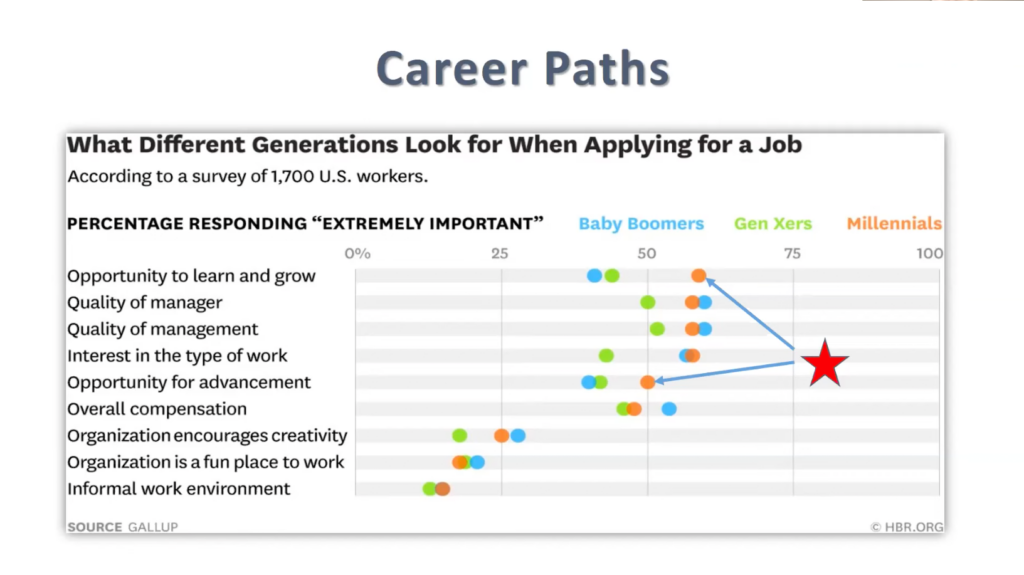
Last week, Michigan Works! Southeast and Ann Arbor SPARK hosted the virtual seminar Behind the Noise: Understand the Real Issues Behind Our Current Talent Crisis. The special guest speakers included:
- Dr. Gabriel Ehrlich, economic forecaster and director of the University of Michigan’s Research Seminar in Quantitative Economics (RSQE),
- Alex Masten, vice president of economic development at The Enterprise Group of Jackson, Inc.,
- Deborah Lyzenga, state administrative manager workforce development, Michigan Department of Labor and Economic Opportunity, and
- Jim Bitterle, managing partner at EDSI Consulting.
Businesses throughout southeast Michigan know that attracting and retaining workers is a struggle in the current labor market. This virtual seminar, co-piloted by Phil Santer, senior vice president of business development and chief of staff at SPARK and Tom Robinson, director of business services for Michigan Works! Southeast, had two clear objectives:
- Provide an understanding of the current labor market for all attendees.
- Share resources and best practices with local companies so they can make data-driven decisions and gain a competitive edge when it comes to attracting and retaining talent.
Current Labor Market

Dr. Ehrlich set the stage for the event by providing a high-level overview of the labor market in Hillsdale, Jackson, Lenawee, Livingston, and Washtenaw counties and walking attendees through the related trends over time. On the slide Job Openings Are High but Leveling Off, he explained that the number of job postings (employer demand) far outweighs the number of job seekers (talent supply). While he expects to see a return to pre-pandemic employment levels for our region by the end of 2023, Dr. Ehrlich spoke in-depth about declining labor market trends and increased employer demand in our region and throughout Michigan. He discussed the need for the State of Michigan to work toward reversing these trends or we will inevitably place a “speed limit” on economic growth in Michigan. He also spoke about employees that have not received a raise since the pandemic hit and how they now have less purchasing power due to inflation. Employers must be proactive in addressing compensation and employee purchasing power to remain competitive in terms of talent since there are so many job options.
Update Recruiting Tactics
After Dr. Ehrlich reviewed the current labor market, Alex Masten shared how the current talent crisis is affecting businesses. Alex recognized the “Great Resignation” as a contributing factor to the talent crisis. The staggering number of resignations since 2020 has stagnated growth opportunities for businesses, hindered expansion, created burnout for current employees, and more. People are exiting the labor market, but where exactly are they going? Alex described a dramatic increase in new business starts since the beginning of the pandemic as an indicator that some workers are leaving the labor market to pursue entrepreneurial endeavors. Other indicators include retirement and early retirement plus the negative impact the pandemic had on women in the workforce.
In order for businesses to attract talent and retain their current workforce, companies must depart from some recruiting strategies that may have been successful in the past. Alex provided an overview of how “job shoppers” are very different today and how companies must be intentional with their recruiting strategies. This includes deliberate use of social media, storytelling to express the value offered by the company and to describe the culture, creating a diverse workforce by proactively engaging different target populations (veterans, people with disabilities, returning citizens, older workers, and more), and much more flexibility when it comes to work hours and environment. She listed the following recruiting tactics as examples:
- Update your company’s policies to remove mandatory drug testing to hire (unless required by law).
- Put together an employee referral program and be sure to make it worthwhile for your current employees.
- Be flexible in terms of work hours, hybrid schedules, job sharing, etc. whenever possible.
- Join a local Business Resource Network (BRN).
- Offer different schedule options to meet the needs of potential employees.
- Invest in your current workforce (training, continuing education, incentives, additional benefits, etc.).
The Three ‘Greats’
Next up was Deb Lyzenga who described the three major trends we have experienced as a result of the pandemic:
- The Great Reassessment: The pandemic was a stark reminder of how very fragile life truly is. Behind the scenes, many people were evaluating their current occupations, their work-life balance, their values, and more.
- The Great Resignation: People left their jobs in record numbers beginning in 2020 and some did not return to the labor market for quite some time while others haven’t returned at all. This happened for a variety of reasons including business closures (both temporary and permanent), “stay home” orders, increased unemployment benefits, generous government assistance, health risks and concerns for general safety and wellbeing, school and childcare closures, and many more.
- The Great Reshuffle: Stark labor force shortages coupled with an increased demand for workers led many businesses to rethink the way they do business, including how they attract and retain talent.
Deb discussed the common barriers that many workers face when it comes to returning to the workforce and resources that can help both employers and employees. She spoke in-depth about the MI Tri-State Child Care Pilot Program and how it has proven to be a successful public-private partnership where the cost of childcare is shared between the employer, the employee, and the State of Michigan. Deb reiterated that employers must become effective storytellers to convey the value of working for their company. One way to convey value is to describe the excellent benefits you provide to employees. She described the following resources as benefits that companies could offer to both current and future employees:
- Michigan Reconnect
- Michigan Learning and Education Advancement Program (MiLEAP)
- MiBridges
- Registered Apprenticeships
Taking Action
Jim Bitterle was the final speaker, and he provided the “how to” for employers when it comes to boosting your talent attraction and retention strategies. He outlined the following variables and resources to consider when developing a plan.
Culture
Focus on culture and be intentional about it. Companies with strong cultures (as defined by their employees) experience lower employee turnover, a good reputation as an employer leading to shorter time to fill open positions, better retention rates/fewer open positions, more engaged employees, higher customer satisfaction scores, and better financial performance. Commitment and buy-in from the people at the top of the organization are essential. Companies should assess and document their current culture and then design their “aspirational culture.” Once you decide what your “aspirational culture” is, determine what management style is required to make it happen and train all of your managers. Walk the walk AND talk the talk.
Flexibility
This looks different for every business, department, industry, etc. The key in terms of flexibility offered to employees by employers is that it is perceived by all as FAIR.
Compensation
Consider wage levels for entry-level jobs and be sure to express any additional value offered by the company. Most people that are jumping jobs purely for compensation reasons are in entry-level positions and leaving for slightly more pay per hour, signing bonuses, and other financial incentives.
Purpose
What is the purpose of your business? Articulating the purpose of your business beyond its financial gain is imperative. Businesses must be intentional in setting, defining, and maintaining their purpose as many workers – especially those in younger generations – are not driven by compensation alone. Many people desire to work for a company with a purpose and values that align with their own.
Borders
Companies must have clear borders to avoid work-life balance issues and burnout, particularly for virtual workers. Employees should know exactly what the expectations are related to their work hours and how to address things that may come up during non-work hours. A lack of borders creates turnover and does not bode well for a company’s reputation as a good employer.
Stay Interviews
Conduct interviews with your current employees to check in with them, give and take feedback, identify potential morale issues, and more. There are many benefits to stay interviews and they may help your company avoid turnover.

Career Paths
Different generations of workers value different things when looking for a job. According to Jim, younger workers are highly motivated by the opportunity to learn and grow as well as the opportunity for advancement. He likened this to beating a level in a video game and advancing to the next level. If you are unable to beat a level, you quit the game and play something else. This “gamification” mindset has strong ties to the workplace and workers may move on to the next job offer if they are not advancing in their current role.
Dashboards
You must measure your talent environment and your culture. Assess whether or not the changes you are making are impacting your business in a positive or negative way. Sample metrics discussed by Jim include ENPS, morale score, bad turnover rate, percent of positions unfilled, average days to hire, and job inquiries per month (the better your reputation is as an employer, the more job inquiries you will get per month).
Rise Above Noise
Since the workforce has choices for where they want to work, companies must tell their stories effectively and remain flexible to be competitive. As Jim summarized, the pandemic accelerated the talent supply and demand trends that began before the pandemic. Businesses looking to adopt attraction and retention strategies should embrace some of the tactics detailed above and rise above the noise.
